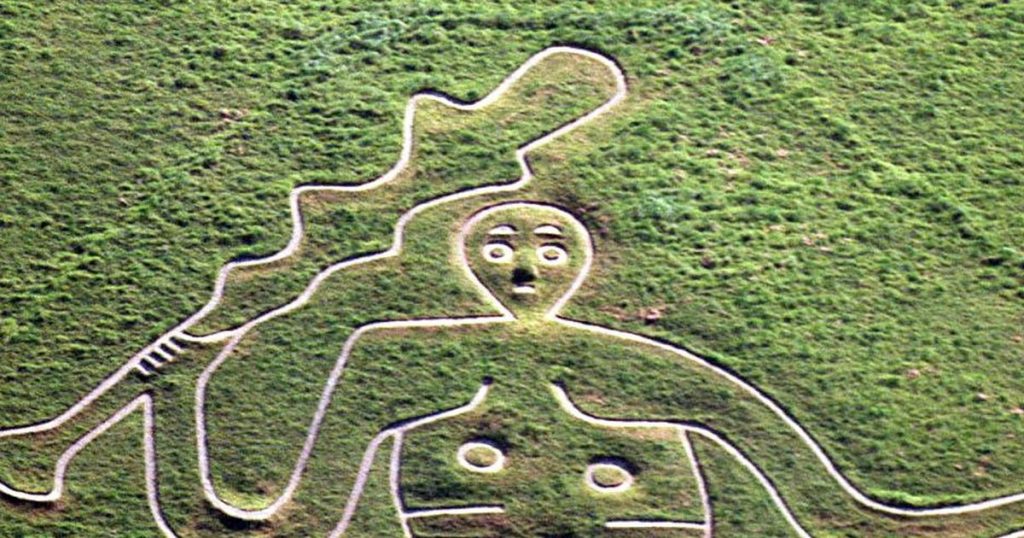A new study has revealed that the famous chalk figure of the Cerne Abbas Giant in Dorset, depicting a giant with a club and an erection, was cut out no later than 1100 AD. Archaeologists have debated over the timeline of the carving, with estimates ranging from Roman times to the 17th century. Using optically stimulated luminescence, researchers narrowed down the timeline to between 700 AD and 1100 AD. The giant likely served as a mustering site for West Saxon armies, with evidence of two major rechalkings over time. The figure may have been associated with Hercules and later repurposed as Saint Eadwold, reflecting shifts in historical interpretations. The discovery offers new insights into the Cerne Giant’s age and identity.
The new dating breakthrough of the Cerne Abbas Giant has uncovered a timeline of its creation, likely occurring between the early Middle Ages, specifically in the ninth or early tenth century. The figure was initially associated with Hercules, aligning with a surge of interest in the Greek hero during the ninth century. However, a Benedictine monastery in Cerne promoted the idea that the giant represented Saint Eadwold in the mid-eleventh century, redirecting the narrative towards Christian beliefs. The examination of the silt and snail shells at the site further supports the early medieval origins of the giant, shedding light on its historical context and evolution.
The Cerne Abbas Giant’s creation was most likely intended to mark a muster station for West Saxon armies, reflecting a practical purpose in the early Middle Ages. The figure’s depiction of Hercules during a period of heightened interest in the mythological hero may have served a symbolic and strategic role in the region. The connection to Saint Eadwold later in the eleventh century suggests a shift towards Christian symbolism and the monastery’s influence over the site. By reinterpreting the giant’s identity, the researchers have deepened our understanding of the figure’s historical significance and cultural evolution over time.
The dating method used by the researchers involved optically stimulated luminescence to determine when minerals in the chalk were last exposed to sunlight. Samples and trenches were excavated at the site to analyze the accumulation of silt and hillwash, providing key insights into the timeline of the Cerne Giant’s creation. The presence of snails first introduced in the Middle Ages in the soils further supports the early medieval age of the figure. By combining scientific dating techniques with historical context, the study offers a comprehensive view of the giant’s origins and significance in the landscape of Dorset.
The Cerne Abbas Giant continues to be a subject of fascination and debate, with its iconic figure carved into the hillside serving as a reminder of ancient traditions and beliefs. The site’s rich history, from a mustering station for armies to a symbol of ancient gods and saints, highlights the complex layers of cultural and religious significance embedded in the landscape. By uncovering the timeline of the giant’s creation and shifting interpretations over the centuries, researchers have shed new light on this iconic landmark in Dorset. The figure’s blend of ancient mythology and medieval Christian symbolism reflects the diverse influences that shaped the region’s history and culture.


